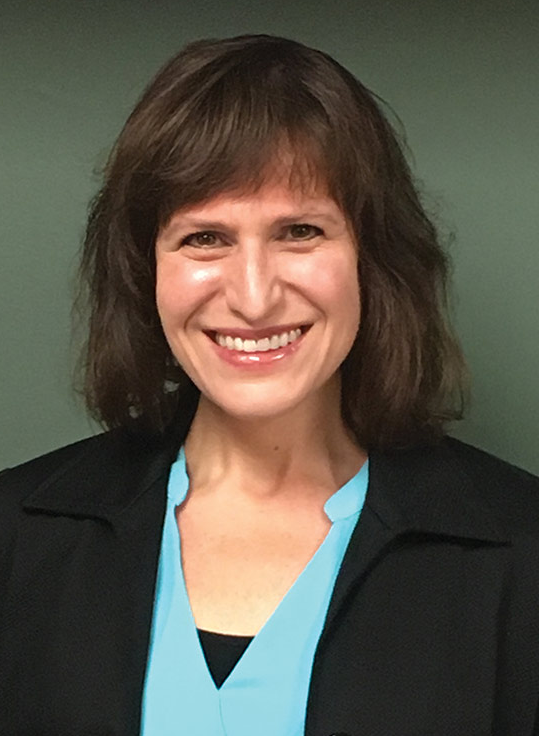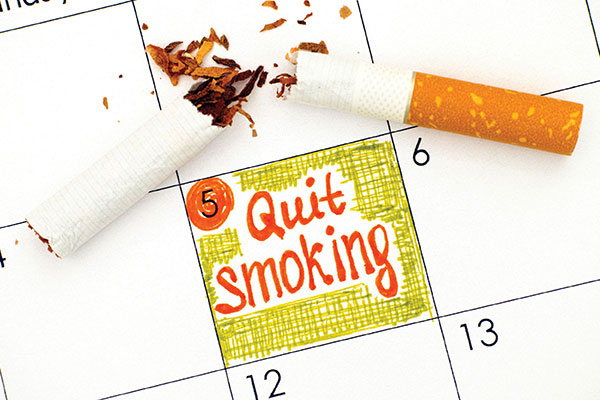You Can Break Free from Nicotine Addiction
Tips to Help You Stop Smoking for Good
by Tierney A. Fisher, DNP, CRNP, Jody Nicoloso, BA, and Frank T. Leone, MD, MS
Many smokers who have been diagnosed with cancer continue to smoke, though they may not understand why. After all, they are aware of the ill-effects of smoking and want to do the most possible to help with their cancer care.
Does this situation sound familiar? Have you ever wondered why it’s so hard to stop smoking? The answer can be found by examining the addictive effect of nicotine on the brain.
NICOTINE AND YOUR BRAIN Nicotine acts as an imposter “safety signal” to the basic survival area of the brain. As a result, smokers’ brains view the absence of nicotine as a threat to survival, which creates a compulsive need to smoke. Although you keep telling yourself to quit, your brain keeps telling you to pick up the tobacco. In the fight between logic and instinct, instinct usually wins. Fortunately, there are effective ways to turn down the volume on your brain’s instinct messages.
MEDICATIONS TO QUIET THE MESSAGES Most people with cancer who use tobacco at the time of their diagnosis attempt to quit without formal treatment. While this is an applaudable effort, studies have shown that only three to five percent of smokers are able to stay tobacco-free after quitting “cold turkey.” Using medication to treat tobacco dependence greatly enhances quit rates.
You can get additional support for your journey by visiting SmokeFree.gov or calling 1-800-QUIT-NOW.
Medications used to treat tobacco dependence can be divided into two categories:
• Controllers are medications that are designed to reduce the urge to use tobacco. These include nicotine patches, varenicline, and bupropion.
• Reliever medications act as a rescue during acute cravings or during times of increased stress. These include nicotine gum, lozenges, inhalers, and nasal sprays.
A well-rounded tobacco treatment plan includes both a controller and a reliever medication to maximize comfort and effectiveness.
These same medications can also be classified as nicotine and non-nicotine medications.
- Nicotine medications, also known as nicotine replacement therapy, have been proven safe and effective for the treatment of tobacco dependence, including in people with heart disease and those who’ve had a recent heart attack. Nicotine replacement therapy includes over-the-counter medications (nicotine gum, lozenges, and patches) and prescription medications (nicotine inhalers and nasal sprays).
- Non-nicotine medications (varenicline and bupropion) help weaken a person’s relationship with tobacco and reduce the desire for continued use. These medications can decrease the struggle often associated with quitting. They also can be used safely in combination with nicotine replacement therapy.
Your healthcare provider can help you develop a tobacco treatment plan to meet your unique needs.
TACKLING YOUR TOBACCO TRIGGERS Our days are filled with signals telling us how to act and respond in various situations. The end of a meal can signal time for a cigarette. Your morning cup of coffee can be the cue to smoke. Even something as simple as waking up in the morning can be a smoking trigger if using tobacco upon waking was part of your daily routine.
Analyze your daily routine and take notice of when you typically use tobacco. Make small modifications to your usual habits and practices that involve tobacco use. This will help desensitize your brain to those triggers. Slight changes in routines can lead to progress in the quitting process.
Develop an action plan of how you will respond to triggering situations. Practice it in your head. Don’t be afraid to seek the help of a counselor to plan and implement your strategy. For example, place your reliever medication in strategic locations to use when you anticipate a trigger or immediately after the urge arises.
ADDITIONAL SUPPORT It’s never too late to quit smoking. Quitting smoking can improve the effectiveness of your treatment, decrease unpleasant treatment-related side effects, and, ultimately, allow you to have a better quality of life.
You can get additional support for your journey by visiting SmokeFree.gov or calling 1-800-QUIT-NOW. These programs can connect you with resources in your community. In some states, quit lines can provide free or reduced-price tobacco treatment medications. There are also a number of mobile apps that provide additional support through online communities.
The first step to quitting is to understand that it is a process. It is not a single pass-or-fail test. This means quitting requires a plan that leaves room for both accomplishments and setbacks while also allowing you to develop new skills during the process. Don’t give up. You can quit for good with the help of your healthcare provider, a counselor, your support system, and effective medications.


Tierney Fisher (left) is a nurse practitioner in the Comprehensive Smoking Treatment Program at the University of Pennsylvania Health System in Philadelphia, PA;
Jody Nicoloso (right) coordinates public health initiatives for the Comprehensive Smoking Treatment Program; and
Dr. Frank Leone (below) is a professor of Medicine at UPENN and program director of the Comprehensive Smoking Treatment Program.

This article was published in Coping® with Cancer magazine, November/December 2018.


